10 Generative AI Skills You Need to Succeed in 2024
In 2024's digital economy, the ability to use generative AI effectively is becoming a critical skill for professionals looking to advance their careers. This blog post provides a practical guide to using generative AI to succeed in the modern workplace.
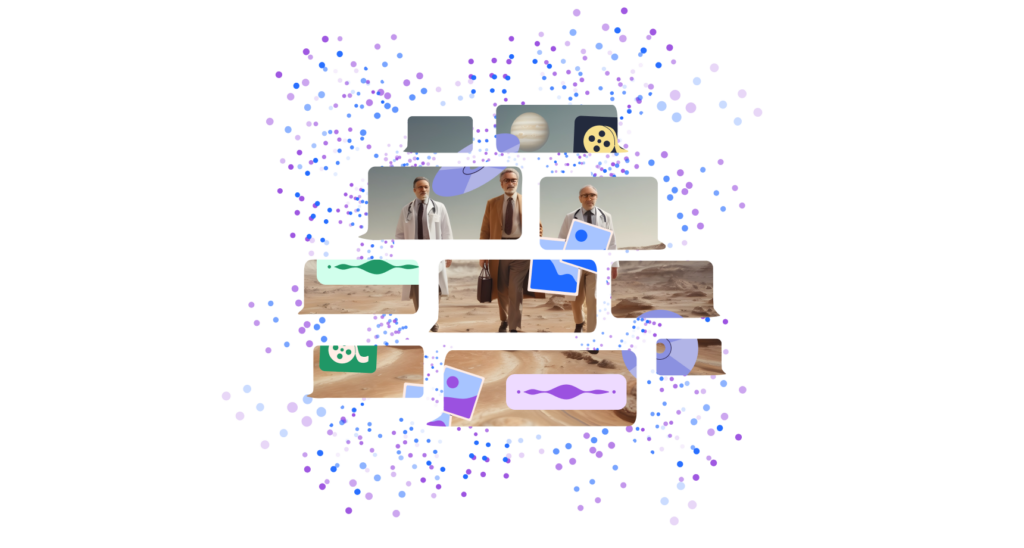
Generative AI improves productivity by automating routine tasks, allowing more time for strategic work.* It also enables large-scale data analytics, transforming the field.* Developing key skills like Python programming, working with large language model APIs, prompt engineering for chatbots, and building AI-powered web apps will give professionals a competitive edge.
The Generative AI Fundamentals in Python skill path at Dataquest covers these critical skills. The following sections will break down each skill area and explain how they collectively contribute to success in an AI-driven workplace. By exploring these topics, you'll gain practical insights to transform your career in an evolving digital landscape.
Why Learn Generative AI Skills in 2024?
Generative AI is revolutionizing the job market, and professionals who master these cutting-edge skills will have a significant competitive advantage. As businesses rapidly adopt AI technologies, the demand for workers with expertise in this field is skyrocketing. In fact, job postings requiring generative AI skills have increased by over 1,800% in 2023, according to a recent report from Lightcast.*
Moreover, generative AI is transforming hiring practices and creating entirely new roles. Companies are actively seeking professionals who can leverage AI to automate tasks, improve efficiency, and drive innovation. Positions like Prompt Engineer, AI Ethicist, and Synthetic Data Scientist are becoming increasingly common.
Skyrocketing Salaries and Job Descriptions
The rising demand for these skills is reflected in the explosive growth of AI-related job postings and compensation packages. On average, salaries for generative AI roles are 47% higher than those for traditional software development positions, with many exceeding $174,000 annually.* Furthermore, job descriptions increasingly emphasize the ability to work with large language models, optimize prompts, and integrate AI capabilities into applications.
Top 10 Generative AI Skills
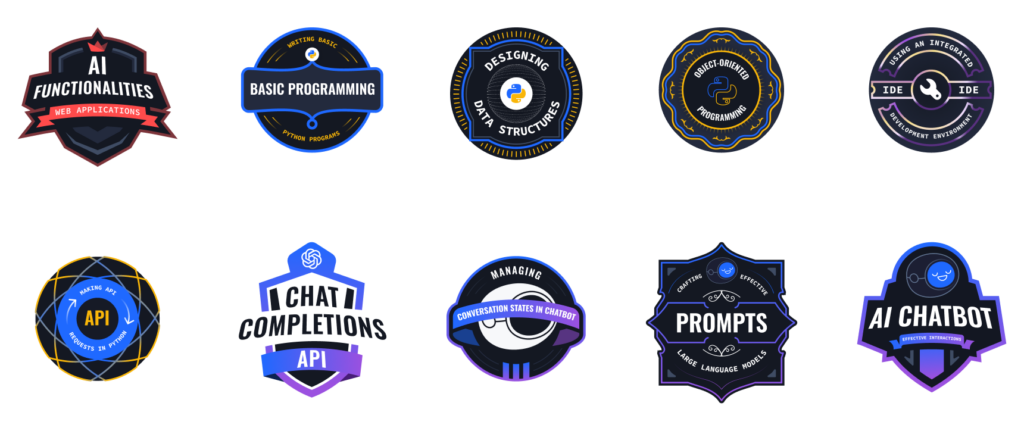
As the job market evolves and companies increasingly prioritize generative AI expertise, professionals must adapt to stay competitive. Developing a strong foundation in the most sought-after generative AI skills is crucial for capitalizing on emerging opportunities. By mastering these competencies, you'll be well-positioned to thrive in the rapidly changing digital landscape.
To help you navigate this exciting field, we've identified the top 10 skills you need:
- Interacting with AI Chatbots
- Writing Basic Python Programs
- Designing Data Structures Using Python Dictionaries
- Implementing Object-Oriented Programming Concepts
- Using an Integrated Development Environment (IDE)
- Making API Requests in Python
- Using OpenAI's Chat Completions API
- Managing Conversation States in Chatbot Applications
- Crafting Effective Prompts for LLMs
- Integrating AI Functionalities into Web Applications
Collectively, these skills enable professionals to leverage generative AI effectively, automate tasks, improve efficiency, and drive innovation. By exploring these topics in depth, you'll gain practical insights that can transform your career in an evolving digital landscape. In the following sections, we'll discuss each skill in more detail, providing a roadmap for mastering the fundamentals of generative AI.
1. Interacting with AI Chatbots
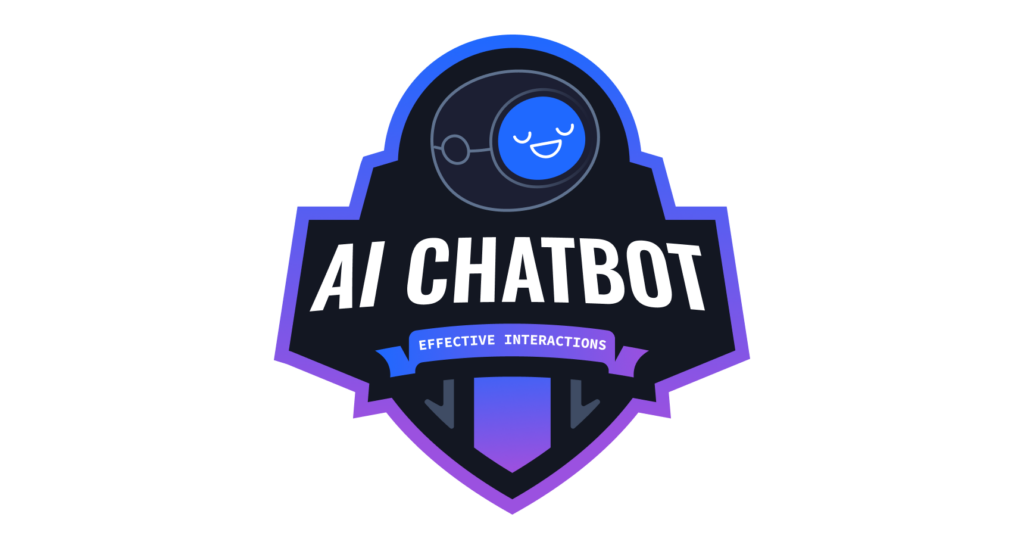
Interacting effectively with AI chatbots is a fundamental skill for professionals aiming to harness generative AI in their work. Beyond automating customer service, these chatbots represent a shift towards more natural user interactions. Professionals who communicate well with AI chatbots can provide prompt, personalized responses to customer inquiries and offer tailored learning experiences in educational settings.
As generative AI advances, new roles like AI ethicists and data curators are emerging, requiring a nuanced understanding of how this technology serves different industries. Chatbot interaction skills also lay the foundation for mastering prompt engineering and API usage.* Dataquest's AI Chatbots: Harnessing the Power of Large Language Models with Chandra course provides AI basics and hands-on experience with Chandra to improve interaction outcomes.
To apply this skill in current roles or advance in the field, professionals should seek practical opportunities through real-world projects or simulations. Staying informed about generative AI trends will highlight areas for innovative application. As more organizations adopt this technology, proficiency in AI chatbot interactions will position professionals to make meaningful contributions.
Back to Top 10 Generative AI Skills
2. Writing Basic Python Programs
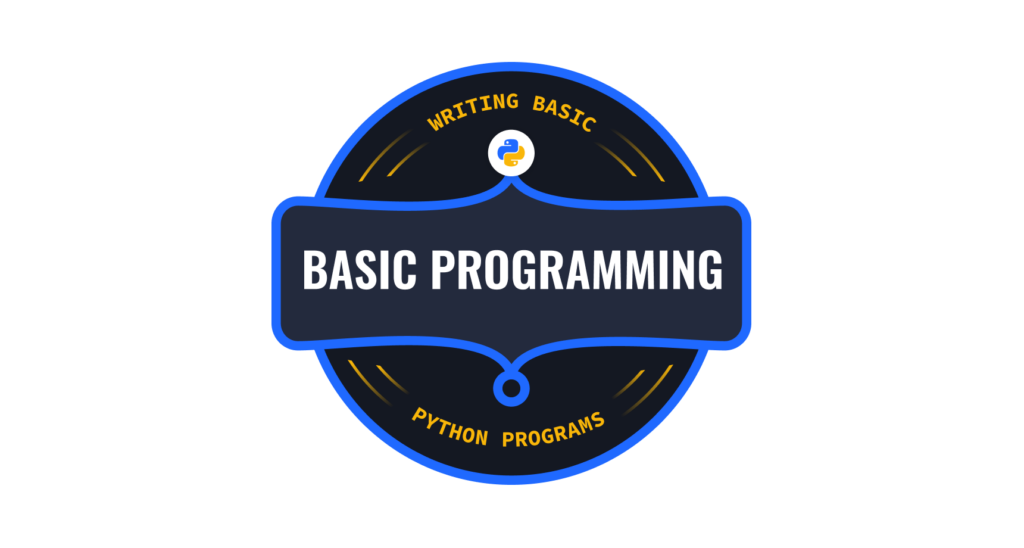
Writing basic Python programs is a fundamental skill for working with generative AI and advancing your career. Python is one of the most popular programming languages for AI development, and proficiency in it opens up opportunities to implement algorithms, customize advanced models, and innovate in this space.*
In a professional setting, basic Python skills enable you to automate repetitive tasks, analyze large datasets, and contribute to cutting-edge generative AI projects. This increases your efficiency, creativity, and marketability as organizations increasingly adopt this technology.² Python programming also prepares you for future advancements as the AI landscape evolves.
Learning Python Programming Fundamentals
While learning Python does present some challenges, there are many resources available to help you get started, including Dataquest's Introduction to Python Programming course. This course teaches the basics, such as working with data types, lists, loops, and conditional statements. By building a solid foundation, you'll be well-equipped to apply Python in generative AI contexts and position yourself as a valuable asset to employers.
Back to Top 10 Generative AI Skills
3. Designing Data Structures Using Python Dictionaries
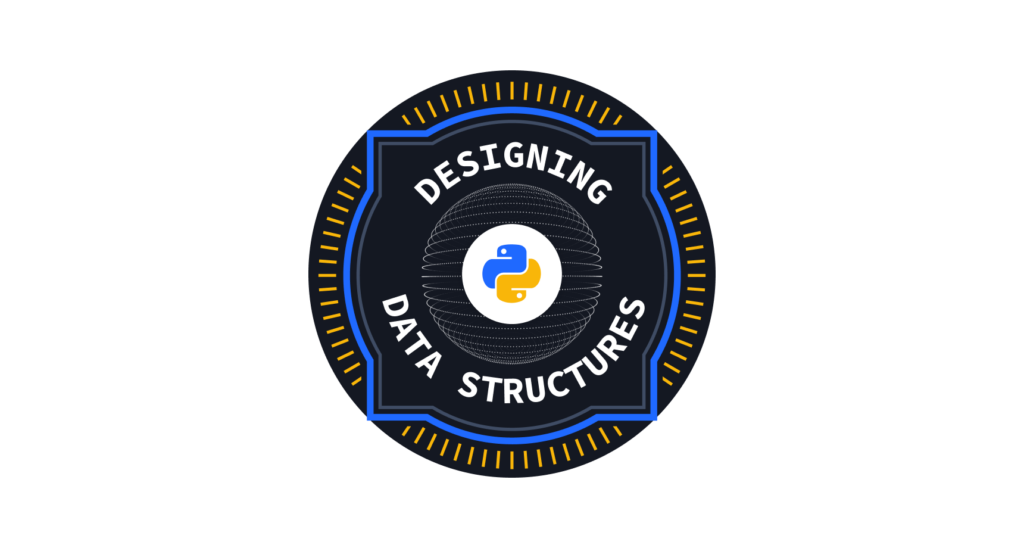
Python dictionaries are a critical skill for generative AI professionals who work with large, complex datasets. Dictionaries provide an efficient way to store, organize, and quickly access data using key-value pairs. This is especially important when building and optimizing applications that use AI.
Mastering Python dictionaries prepares you to:
- Structure and process data for model training
- Efficiently search for and retrieve specific datapoints
- Transform data representations for feature engineering
- Optimize data pipelines to boost system performance
With practice, you can apply these skills to create innovative generative AI solutions and advance cutting-edge technologies.
While working with complex data structures does present challenges, resources like Dataquest's Python Dictionaries, APIs, and Functions course provide hands-on practice with real-world examples. By building your skills step-by-step, you'll gain the confidence to work on advanced generative AI projects and position yourself for success in this rapidly evolving field.
Back to Top 10 Generative AI Skills
4. Implementing Object-Oriented Programming Concepts
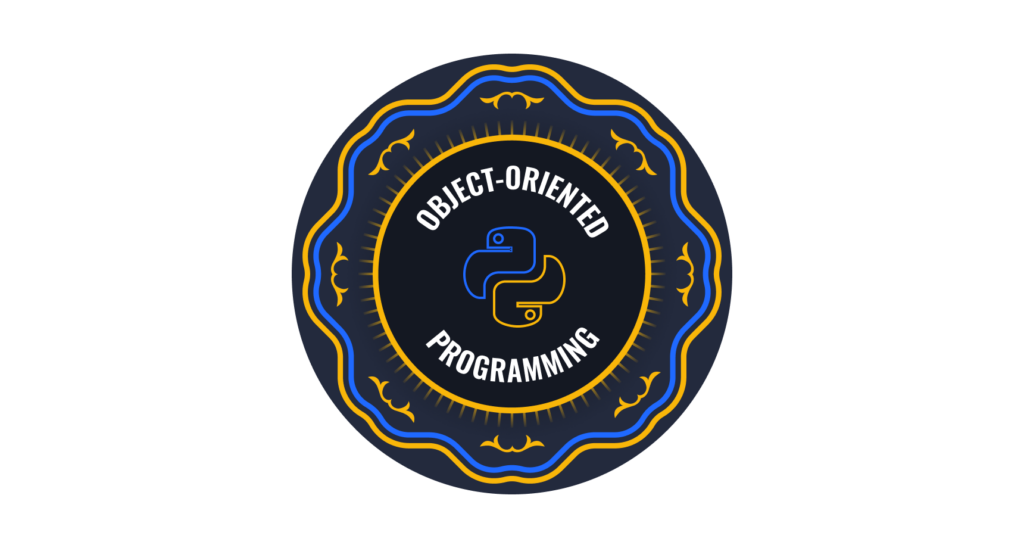
Object-oriented programming (OOP) is an essential skill for developing generative AI applications that are maintainable and scalable. OOP organizes code into reusable objects, making it easier to manage complexity as AI systems grow. By structuring code around objects that encapsulate data and methods, developers can update specific components without disrupting the entire system.
In practical terms, OOP enables building modular generative AI frameworks where different models, datasets, and evaluation metrics can be swapped in and out efficiently. This flexibility is crucial as teams experiment with new architectures and rapidly evolve their applications. OOP also promotes code reuse across projects, saving time and reducing errors.
Learning OOP for Generative AI
While OOP does require a shift in thinking from procedural programming, its benefits for generative AI make it a worthwhile skill to learn. Dataquest's Intermediate Python course provides a hands-on introduction to OOP concepts and their applications. With practice, OOP enables writing cleaner, more efficient code for AI projects - a key capability as these technologies become increasingly integrated into products and workflows.*
Back to Top 10 Generative AI Skills
5. Using an Integrated Development Environment (IDE)
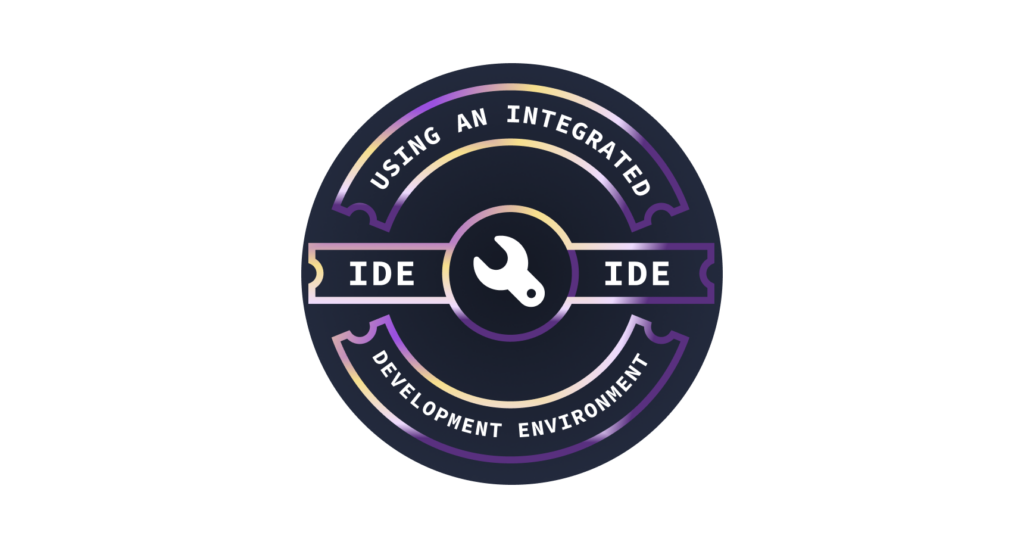
Using an Integrated Development Environment (IDE) is a critical skill for efficiently developing generative AI applications. IDEs enhance productivity by providing features like syntax highlighting, code completion, debugging tools, and version control integration, streamlining the development process.*
In professional settings, IDEs enable developers to write clean, error-free code faster. This increased efficiency can lead to quicker project turnaround times and more opportunities for innovation. With generative AI technologies, developers can complete coding tasks up to twice as fast when using an IDE.* Tools like GitHub Copilot exemplify how generative AI is accelerating software development within IDEs.*
Learning to use an IDE does present some challenges, such as navigating a new interface and understanding advanced features. However, courses like Dataquest's Tooling Essentials for Python Users provide a hands-on introduction to make the process approachable for learners at all levels. With practice, using an IDE will become an invaluable skill for anyone pursuing a career in generative AI.
Back to Top 10 Generative AI Skills
6. Making API Requests in Python
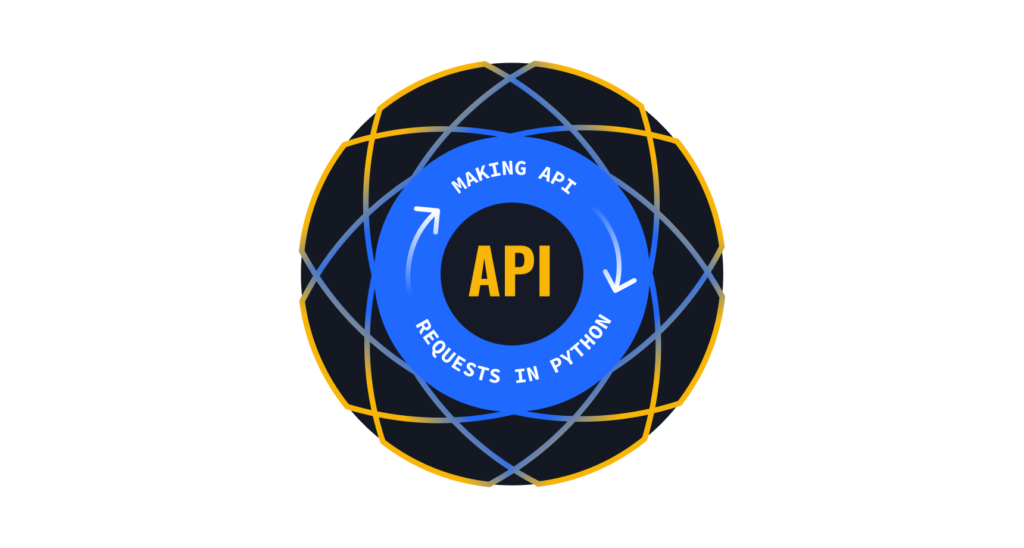
Making API requests in Python is a crucial skill for working with generative AI technologies. It allows developers to access the capabilities of advanced AI models and incorporate them into applications. With this skill, you can automate data extraction, enrich datasets and build dynamic tools powered by AI.
Using Python libraries like Requests, you can interact with generative AI APIs to complete complex tasks, from text analysis to image generation, with just a few lines of code. However, working with APIs does require an understanding of query parameters, authentication protocols, rate limits and error handling. Dataquest's APIs and Web Scraping for AI Applications course provides hands-on practice with these concepts in a generative AI context.
To apply API skills on the job, consider:
- Implementing secure authentication with API keys or OAuth tokens
- Optimizing performance with concurrent requests and response caching
- Designing robust error handling and retry logic
With these techniques, you can efficiently integrate generative AI into your workflows to automate tasks, gain insights and build intelligent applications.
Back to Top 10 Generative AI Skills
7. Using OpenAI's Chat Completions API
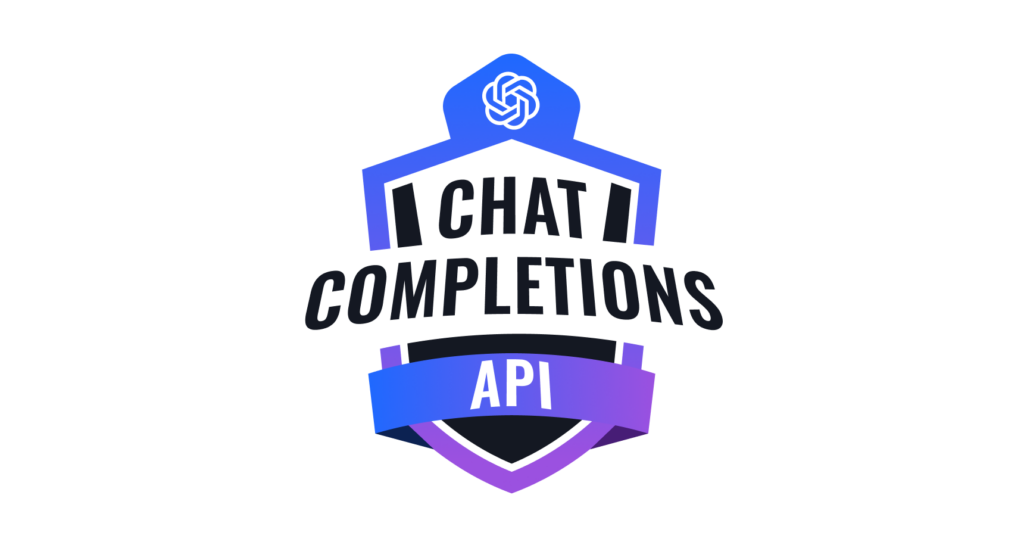
OpenAI's Chat Completions API plays a pivotal role in creating conversational agents that closely mimic human interaction, an increasingly crucial skill in the generative AI landscape. This API enables developers to build advanced chatbots and virtual assistants that provide personalized, contextually relevant responses. By leveraging the power of large language models, these AI agents can engage in natural conversations and handle complex user queries, revolutionizing industries from customer service to education.
However, effectively utilizing this powerful tool requires a strong understanding of prompt engineering, conversation state management, and API request optimization. Overcoming these challenges is crucial for professionals aiming to harness the full potential of generative AI in their work.
Dataquest's Prompting Large Language Models in Python course provides valuable guidance on developing expertise in this area. Through hands-on exercises, learners gain practical experience in crafting effective prompts, managing conversation context, and efficiently interacting with the API. With over a 1,800% increase in generative AI job postings from late 2022 to mid-2023, mastering these skills positions professionals to capitalize on the surging demand and drive innovation across industries.*
Back to Top 10 Generative AI Skills
8. Managing Conversation States in Chatbot Applications
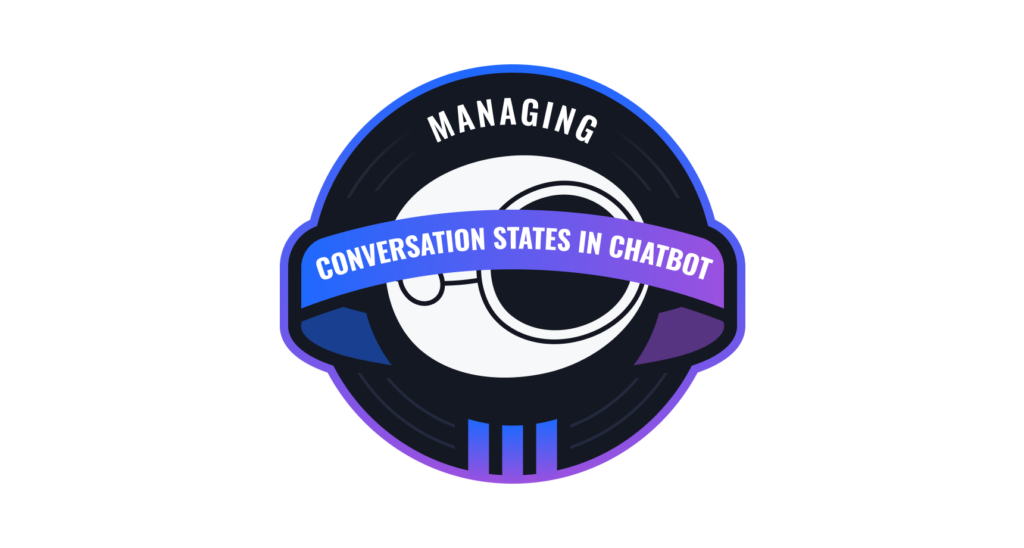
Effectively managing conversation states is a critical skill for creating advanced chatbots that deliver personalized, contextually relevant interactions. By maintaining context across dialog turns, developers enable AI agents to engage in more natural conversations, enhancing the user experience.*
This skill is essential for applications like:
- Customer service chatbots that handle multi-step inquiries
- Educational AI tutors that adapt to individual learners
- Virtual assistants that complete sequential tasks
However, managing conversation states presents challenges such as designing effective data structures, preventing context loss, and optimizing memory usage. Dataquest's Prompting Large Language Models in Python course teaches techniques to overcome these hurdles.
As businesses increasingly adopt conversational AI, the ability to create chatbots that maintain coherent exchanges is becoming a highly valued skill.* Proficiency in this area demonstrates expertise in leveraging generative AI technologies like transformers and deep learning models to build intelligent, user-friendly interfaces - a key capability for driving innovation across industries.
Back to Top 10 Generative AI Skills
9. Crafting Effective Prompts for LLMs
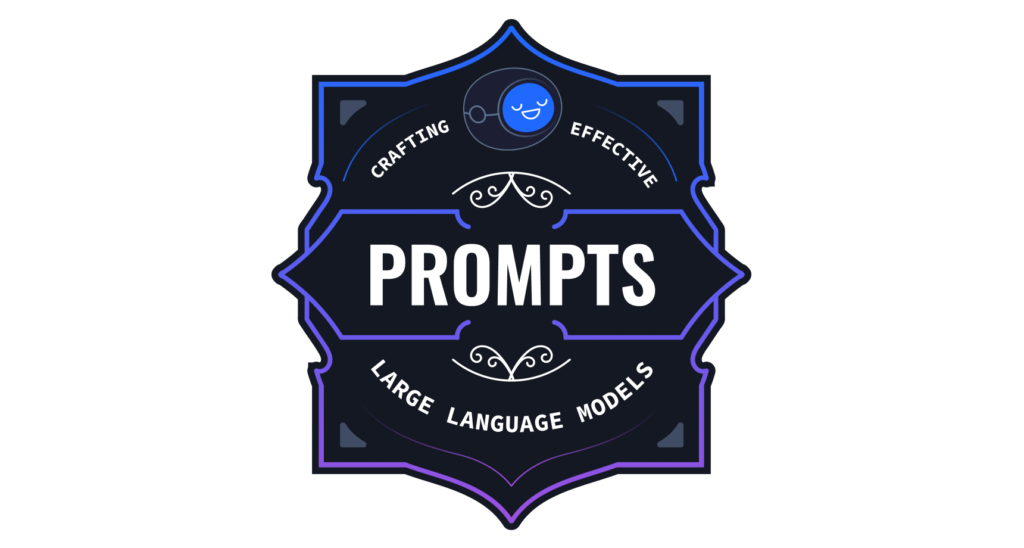
Crafting effective prompts for large language models (LLMs) is critical for producing outputs that meet user needs. The quality of the input prompt directly impacts the relevance and utility of the generated text. When prompts lack precision, LLMs face a "garbage in, garbage out" scenario that leads to poor results.
Prompt Engineering Techniques
Several techniques can enhance LLM performance through effective prompting:
- "Prompt sandwiches" that provide task context, instructions, and examples
- Iterative prompting to refine outputs over multiple rounds
- Few-shot prompting demonstrating desired responses
These approaches supply the model with more specificity and clarity to guide its outputs.* Dataquest's Prompting Large Language Models in Python course offers hands-on practice implementing these techniques.
As generative AI reshapes the job landscape, prompt engineering is emerging as a crucial skill. Professionals who can craft highly effective prompts will be well-positioned to maximize the potential of LLMs across industries.* Whether optimizing chatbots, content generators, or coding assistants, this skill enables practitioners to unlock new efficiencies and innovation in their work.
Back to Top 10 Generative AI Skills
10. Integrating AI Functionalities into Web Applications Using Streamlit
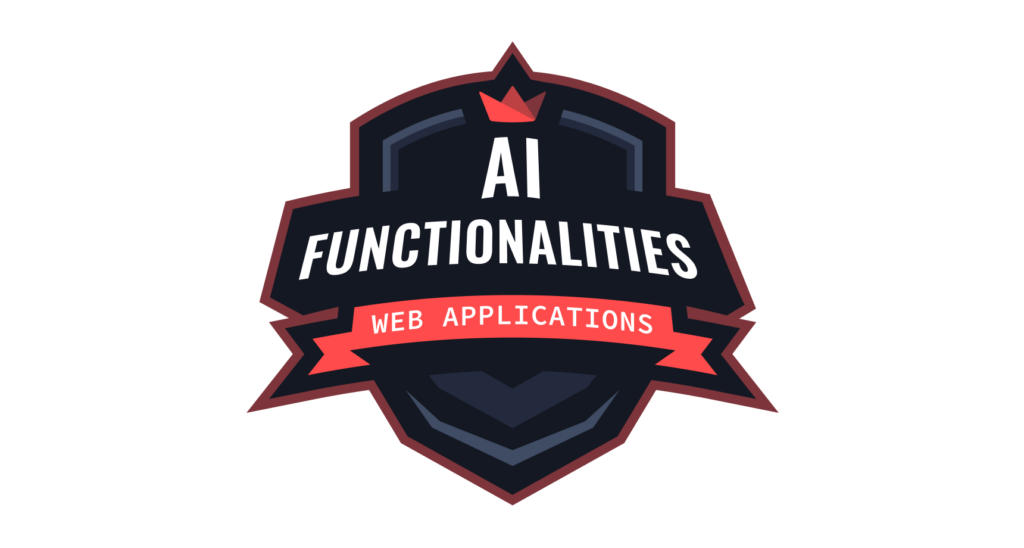
Adding AI capabilities to web apps is a high-demand skill as more organizations leverage generative AI. Streamlit simplifies this process, enabling developers to create interactive, AI-powered applications quickly and easily. With Streamlit, you can integrate advanced functionalities like personalized recommendations, predictive analytics, and natural language processing into your web apps, all with minimal setup and coding.
Streamlit offers several key benefits for AI app development:
- Quickly build and deploy web apps using Python
- Easily integrate pre-built or custom AI models
- Create interactive user interfaces with widgets and visualizations
- Automatically update app views as the underlying data changes
However, working with Streamlit does require understanding how to structure applications, manage state, and optimize performance. Dataquest's Designing Dynamic Python Applications with Streamlit course provides hands-on practice with these concepts, teaching you how to build sophisticated AI-driven applications. You'll learn to create interactive dashboards, integrate machine learning models, and design responsive user interfaces, preparing you for real-world generative AI projects.
Back to Top 10 Generative AI Skills
Common Misconceptions and Challenges
Learning to use generative AI comes with misconceptions and challenges. It's important to have an accurate understanding of this technology's capabilities and limitations. Let's look at two common myths and the real-world obstacles organizations face when adopting generative AI.
Misconception #1: Autonomous Improvement
Contrary to popular belief, generative AI cannot learn or enhance its capabilities on its own after initial training without additional data or retraining*. The model's performance is fixed based on the data it was originally trained on. Organizations must be aware of this constraint when planning projects and setting expectations.
Misconception #2: Infallible Performance
Another common myth is that generative AI operates flawlessly and can improve over time without human intervention. In reality, these models have significant limitations. They struggle with nuanced language understanding and can produce inconsistent or biased outputs*. Rigorous testing and human oversight are essential to ensure reliable performance.
Integration Challenges
Integrating generative AI into existing systems and workflows is complex. Without careful planning, organizations risk accumulating technical debt that hinders the scalability and maintainability of AI applications. To navigate this challenge, it's crucial to start with a clear strategy, set incremental goals, and build in flexibility to adapt as the technology evolves. Courses like Generative AI Fundamentals in Python provide foundational skills for planning and implementing successful AI projects.
While generative AI presents challenges, they are surmountable with the right approach. By understanding the technology's true capabilities, planning carefully, and continually learning, professionals can harness the power of generative AI to drive innovation and efficiency in their work.
How to Start Using Generative AI
Master the Fundamentals
Initiating your generative AI journey requires foundational knowledge, practical experience, and a growth mindset. Start by grasping the core concepts in:
- Python programming
- API interactions
- Prompt engineering
- Application development
Dataquest's Generative AI Fundamentals in Python skill path offers a structured curriculum to progressively build these competencies.

Prioritize In-Demand Skills
To identify the most relevant concepts for your career goals, consider the economic impact and job market demands of generative AI. With this technology poised to contribute trillions to the global economy annually, specialized skills like prompt engineering and model fine-tuning are increasingly valuable. Prioritize your skill development by aligning with industry trends and integrating technical abilities with essential soft skills*.
Choose the Right Learning Platform
The platform you choose for mastering generative AI should offer a comprehensive curriculum spanning theory and practical application. Look for hands-on learning experiences through real-world projects that reinforce your knowledge and skills. Dataquest provides this through project-based courses that ensure you can apply what you learn.
Engage in Practical Projects
After grasping foundational concepts, immediately transition into practical projects. Choose projects relevant to your career objectives that showcase your proficiency to potential employers. Developing chatbot applications or integrating large language model functionalities into web apps using Streamlit are great examples.
Stay Current with AI Advancements
To stay updated with generative AI advancements, actively engage with online courses, tutorials, community discussions, and experiment with new tools. Join networks like LinkedIn or dedicated generative AI forums to gain expert insights and connect with others in the field*.
Begin your generative AI journey today with Dataquest's Generative AI Fundamentals in Python skill path and start building the skills to thrive in this transformative field.
Why Choose Dataquest for Learning Generative AI?
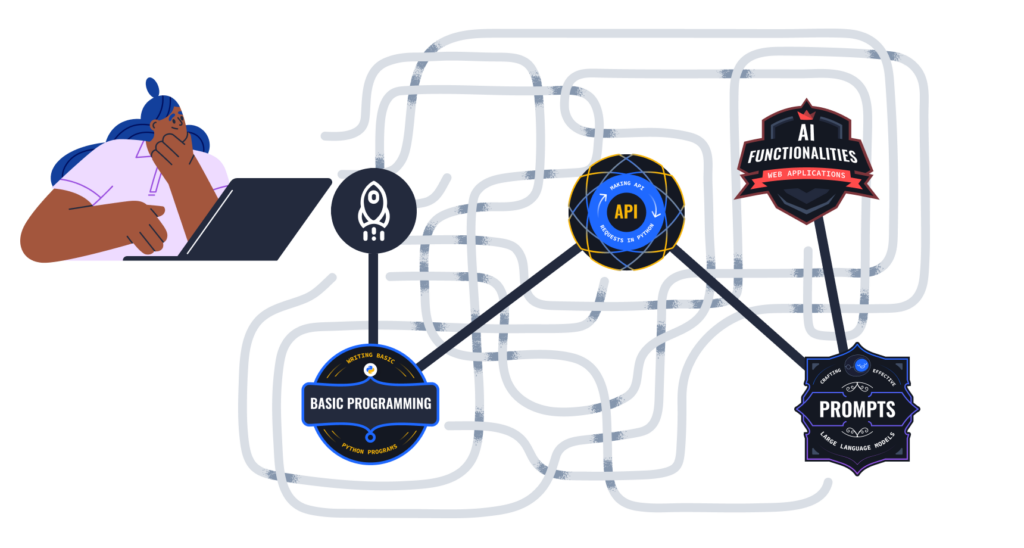
Dataquest offers a unique, hands-on approach to learning generative AI. You'll work directly with large language models to build practical skills in:
- Python programming for AI
- Making API requests
- Crafting effective prompts
- Developing AI-powered web apps
This interactive learning experience ensures you gain confidence applying generative AI to real projects.
Project-Based Curriculum
Designed in collaboration with industry experts, Dataquest's project-focused courses teach you to use generative AI to solve genuine business problems. You'll build chatbots, integrate AI into applications, and automate complex workflows. Completing projects like these gives you a strong portfolio to showcase your abilities to employers.
Collaborative Learning Community
When you learn with Dataquest, you become part of a vibrant community of data professionals. Connect with peers to discuss course concepts, get feedback on your projects, and grow your professional network. This supportive environment fosters continuous learning and career development.
Skills for Career Success
The Generative AI Fundamentals in Python skill path covers the most in-demand skills for leveraging this transformative technology. You'll learn Python programming, API interactions, prompt engineering, and AI app development - capabilities that are increasingly essential across industries*. By mastering these competencies through Dataquest's structured curriculum, you'll be prepared to drive innovation and efficiency using generative AI.
Generative AI is creating unprecedented opportunities for automation and productivity across sectors. Professionals who develop hands-on generative AI skills will have a significant competitive advantage in the job market. With Dataquest, you'll gain the expertise to succeed in this rapidly evolving field.
Conclusion
Mastering the top 10 generative AI skills is crucial for career success in today's rapidly evolving digital landscape. To get started with generative AI:
- Learn to interact with AI models
- Build a strong foundation in Python programming
- Commit to continuous skill development
Dataquest's Generative AI Fundamentals in Python skill path provides a structured curriculum to help you gain these essential competencies.
As generative AI continues to transform industries and boost the global economy, staying current on the latest advancements will be key to maintaining a competitive edge. By partnering with Dataquest to develop hands-on generative AI skills, you'll be well-positioned to drive innovation and efficiency in your work, opening up new opportunities for career growth in this exciting field.